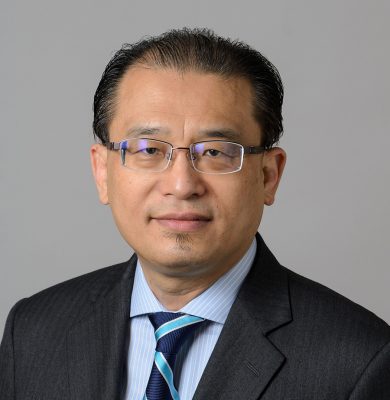 Prof. Jackie Sung was awarded the 2024 AIAA Energy Systems Award for his significant contribution in the broad field of energy systems, and specifically for his outstanding contributions to flame dynamics and low-temperature chemistry for developing fuel-flexible, ultra-low emission, efficient combustion energy systems using conventional and alternative fuels.
Prof. Jackie Sung was awarded the 2024 AIAA Energy Systems Award for his significant contribution in the broad field of energy systems, and specifically for his outstanding contributions to flame dynamics and low-temperature chemistry for developing fuel-flexible, ultra-low emission, efficient combustion energy systems using conventional and alternative fuels.
He will be recognized during the 2024 AIAA SCITECH Forum, 8-12 January 2024 in Orlando, FL. The prestigious award is sponsored by the AIAA Terrestrial Energy Systems.
Dr. Sung’s research and teaching interests have included structure of chemically reacting flow, catalytic combustion, micro-propulsion, laser diagnostics, supersonic combustion, unsteady and high-pressure flame phenomena, soot and NOx formation, flame extinction and ignition, development of detailed and reduced chemical kinetic models, alternative fuel utilization and combustion, and clean combustion technology. His research is funded by various federal and industrial sponsors. He is a Fellow of the American Society of Mechanical Engineers (ASME) and the Combustion Institute, an Associate Fellow of the American Institute of Aeronautics and Astronautics (AIAA), an elected member of the Connecticut Academy of Science and Engineering, and a member of the Editorial Board for Combustion Theory and Modelling.
 Abstract: Recent decades have seen rapid development in all manufacturing technologies, including additive manufacturing (AM). This has raised the need for design methods to leverage the new, increasingly complex fabrication possibilities. Topology optimization has the potential to generate new high-performing design solutions since it is a free-form design method that does not require a preconceived notion of the final layout. It uses computational mechanics and optimization tools to generate improved designs. For operating designs to perform as predicted, the used model must capture the material behavior. Additionally, the planned manufacturing process might induce material characteristics and design limitations that should be considered as the design is generated. This talk focuses on identifying and incorporating behavioral and manufacturing aspects within the design process. Different strategies for integration within topology optimization will be discussed. This includes consideration of manufacturing-induced material characteristics, which is illustrated through tailoring design to material extrusion-based AM. In material extrusion, a nozzle moves across a build plate and deposits a material bead on a 2D slice of the design. These processes typically induce some degree of anisotropy through weak(er) bonding between adjacent beads. To improve the manufacturability of large-scale designs, the application of a Mixed Integer Linear Programming formulation is discussed for highly restricted volume scenarios. Finally, a new design framework is introduced in which the interactive participation of the design engineer is enabled to resolve more complex mechanic phenomena.
Abstract: Recent decades have seen rapid development in all manufacturing technologies, including additive manufacturing (AM). This has raised the need for design methods to leverage the new, increasingly complex fabrication possibilities. Topology optimization has the potential to generate new high-performing design solutions since it is a free-form design method that does not require a preconceived notion of the final layout. It uses computational mechanics and optimization tools to generate improved designs. For operating designs to perform as predicted, the used model must capture the material behavior. Additionally, the planned manufacturing process might induce material characteristics and design limitations that should be considered as the design is generated. This talk focuses on identifying and incorporating behavioral and manufacturing aspects within the design process. Different strategies for integration within topology optimization will be discussed. This includes consideration of manufacturing-induced material characteristics, which is illustrated through tailoring design to material extrusion-based AM. In material extrusion, a nozzle moves across a build plate and deposits a material bead on a 2D slice of the design. These processes typically induce some degree of anisotropy through weak(er) bonding between adjacent beads. To improve the manufacturability of large-scale designs, the application of a Mixed Integer Linear Programming formulation is discussed for highly restricted volume scenarios. Finally, a new design framework is introduced in which the interactive participation of the design engineer is enabled to resolve more complex mechanic phenomena.

